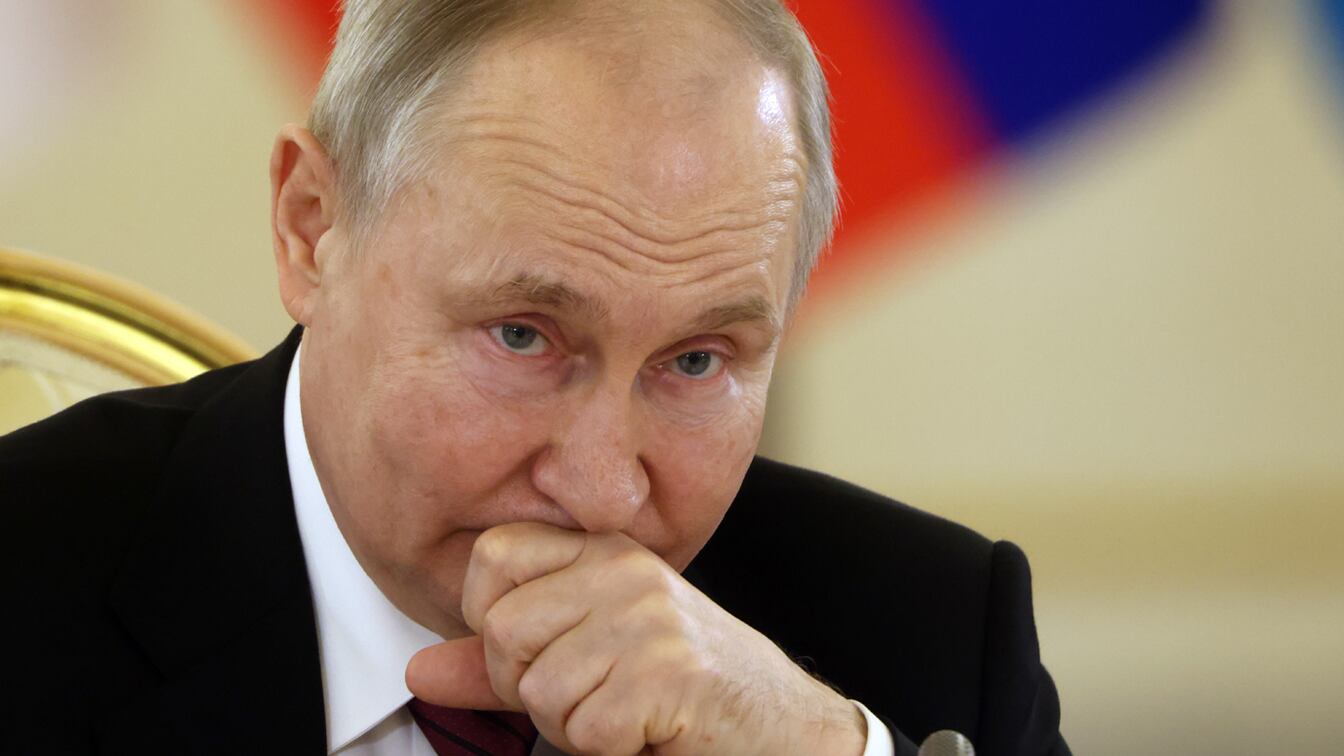It was meant to be the Russian “wonder weapon,” but it turned out to be just another example of Vladimir Putin’s military over-promising and under-delivering.
The Kh-47M2 “Kinzhal” — which means “dagger” in Russian — was billed as a state-of-the-art hypersonic missile, “invincible,” in Putin’s words, to Western air defenses. For the early months of Russia’s full-scale war on Ukraine, it seemed to be just that. The missile had been used in the first year of the war to successfully strike several targets across Ukraine, no doubt causing significant damage.
Turning point
That all changed when Ukraine received U.S.-manufactured Patriot PAC-2 and PAC-3 air defense systems in April. The PAC-3, the latest version of the venerable American system, was originally developed as part of America’s Strategic Defense Initiative, nicknamed “Star Wars” by its critics, first introduced in the early 1980s by President Ronald Reagan to counter ballistic missiles.
Over a little more than two weeks, Ukrainian-manned Patriots shot down seven out of seven Kinzhals launched at targets throughout Ukraine, according to the Ukrainian Air Force. Pentagon press secretary Brig. Gen. Pat Ryder confirmed the first shoot-down at a press conference on May 9, and another administration official speaking to the New York Times on May 16 confirmed the other interceptions.
During the May 16 attack, which directly targeted the Patriot system, part of the platform suffered "minor" damage, according to U.S. officials, that was repaired within a day. The Kremlin, of course, has maintained the fiction that all its missiles successfully hit their targets. "The fake report that a Kinzhal was allegedly intercepted is a wishful thinking attempt," a Russian Ministry of Defense source told the state media outlet TASS.
Even if the Ukrainian military is overstating its defensive capability, a Russian missile falling anywhere in Kyiv would have been detected by locals and recorded on social media. Since the arrival of the Patriot missile batteries, that has not happened.
Assessing the hypersonic threat
The Kinzhal entered service in December 2017. Two years later, Putin declared that it and other Russian hypersonic weapons proved that Russia was leading the world in hypersonic capability. The boast was reminiscent of Soviet Premier Nikita Khrushchev’s bravado in the late 1950s, when he claimed that Soviet intercontinental ballistic missiles were rolling off the factory floor “like sausages,” feeding the false perception in the United States that the U.S. was at a disadvantage and suffering from a missile gap with Moscow. “We have a situation that is unique in modern history when they are trying to catch up with us," Putin said. “Not a single country has hypersonic weapons, let alone hypersonic weapons of intercontinental range.”
He was wrong.
In reality, the Kinzhal is not that impressive. It is an upgraded version of Russia’s older, ground-launched 9K720 Iskander ballistic missile, modified so that it can be air-launched from Russian aircraft. As for Putin’s claim of the weapon’s hypersonic speed, this was true in the same way all ballistic missiles since the German V-2 rockets started pulverizing London in World War II have achieved hypersonic speeds at certain phases of flight.
Despite Putin’s grand claims, air-launched ballistic missiles are not new technology.
The GAM-87 “Skybolt” air-launched ballistic missile was developed by the United States in the late 1950s, and hit top speeds of Mach 12, well in excess of the speeds the Kinzhal can reach. However, the project was ultimately canceled in 1962, when U.S. Secretary of Defense Robert McNamara assessed that the system provided very little benefit over the United States’ existing arsenal of land- and submarine-launched ballistic missiles.
Russian scientists charged with treason
Putin’s claims relied on confusion over the definition of “hypersonic” and also the conflation of the Kinzhal with the newer generations of hypersonic weapons. Hypersonic cruise missiles and hypersonic glide vehicles have the ability to maneuver — to evade air defenses, for example — at speeds in excess of Mach 5, something the Kinzhal cannot do. This makes new-generation hypersonic weapons much more difficult to intercept than traditional ballistic missiles traveling at hypersonic speeds.
Regardless of the exaggerated Russian claims, the Kinzhal was still an impossible target for Ukraine’s Soviet-legacy air defense systems to shoot down. A Ukrainian government source told Yahoo News that the provision of such air defense systems, while primarily providing an invaluable shield for Ukrainian people, is a cheap way for Ukraine’s Western partners to gain real life combat data on their performance against the latest Russian weapons.
Russian hubris that the system worked perfectly seemed even more incredible in light of the arrest of the third scientist responsible for the development of the Kinzhal on charges of “high treason.” On May 16, the same day Ukrainian Patriots shot down six incoming Kinzhals, Russian state media announced the arrest of Valery Zvegintsev. Zvegintsev joins Anatoly Maslov and Alexander Shiplyuk, two other high-profile Russian scientists who worked on the Kinzhal project and were arrested for alleged treason in the summer of 2022.


